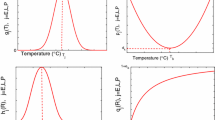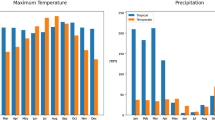Abstract
Parasitism and predation are two ecological interactions that can occur simultaneously between two species. This is the case of Culicidae (Insecta: Diptera) and water mites (Acari: Hydrachnidia). The larva mites are~parasites of aquatic and semiaquatic insects, and deutonymphs and adults are predators of insect larvae and eggs. Since several families of water mites are associated with mosquitoes there is an interest in the potential use of these mites as biological control agents. The aim of this paper is to use mathematical modelling and analysis to assess the impact of predation and parasitism in the mosquito population. We propose a system of ordinary differential equations to model the interactions among the larval and adult stages of mosquitoes and water mites. The model exhibits three equilibria: the first equilibrium point corresponds to the state where the two species are absent, the second one to the state where only mosquitoes are present (water mites need insects to complete their life cycle), and the third one is the coexistence equilibrium. We analyze conditions for the asymptotic stability of equilibria, supported by analytical and numerical methods. We discuss the different scenarios that appear when we change the parasitism and predation parameters. High rates of parasitism and moderate predation can drive two species to a stable coexistence.
Similar content being viewed by others
References
Bader C. (1980) Some biological and ecological data on water mites, mainly some significant data on the life-duration. Int. J. Acar. 6(3): 239–243
Berding C., Keymer A.E., Murray J.D., Slater A.F.G. (1987) The population dynamics of aquired immunity to helminth infection: experimental and natural transmission. J. Theor. Biol. 126, 167–182
Davids C. (1997) The influence of larval parasitism on life history strategies. in water mites (Acari: Hydrachnidia). Arch. Hydrobiol. 141(1): 35–43
Dixon A.F.G. (2000) Insect Predator-Prey Dynamics. Cambridge University Press, Cambridge
Gubler D.J.: Dengue. In: Monath T.P. (ed.) The Arbovirus: Epidemiology and Ecology, vol. II, pp. 213–261. CRC Press, Florida (1986)
Hale J.K. (1969) Ordinary Differential Equations. Wiley, New York
Hassell M.P. (1980) Foraging strategies, population models, and biological control: a case of study. J. Anim. Ecol. 49, 603–628
Hassell M.P., May R.M. (1973) Stability in insect host-parasite models. J. Anim. Ecol. 42, 693–726
Laird M. (1947) Some natural enemies of mosquitoes in the vicinity of Palmalmal, New Britain. Trans. R. Soc. N.Z. 76, 453–476
Lanciani C.A., Boyt A.D. (1977) The effect of a parasitic water mite, Arrenurus pseudotenuicollis (Acari: Hydrachnellae), on the survival and reproduction of the mosquito Anopheles crucians (Diptera: Culicidae). J. Med. Entomol. 14, 10–15
Mullen G. (1975) Acarine parasites of mosquitoes I A critical review of all know records of mosquitoes parasitized by mites (Acarina: Hydrachnellae). Proc. N.J. Mosq. Exterm. Assoc. 61, 90–94
Murdoch W., Briggs Ch.J., Swarbrick S. (2005) Host suppression and stability in a parasitoid-host system: experimental demonstration. Science 309, 610–613
Nicholson A.J., Bailey V.A. (1954) An outline of the dynamics of animal population. Aust J. Zool. 2, 9–65
Roberts M.G. (1995) A pocket guide to host-parasite models. Parasitol. Today 11(5): 172–177
Smith B.P. The potential of mites as biological control agents of mosquitoes. In: Hoy M., Cunnigham G., Knutson L. (eds.) Research needs for development of biological control of pest by mites, pp. 79–85. Agric. Exp. Stn. Univ. Calif., USA (1983)
Smith B.P., McIver S.B (1984) Factors influencing host selection and successful parasitism of Aedes spp. mosquitoes by Arrenurus spp. mites. Can J. Zool. 62, 1114–1120
Smith B.P. (1988) Host-parasite interaction and impact of larval water mites on insects. Ann. Rev. Entomol. 33, 487–507
Smith I.M., Cook D.R. Water mites. In: Thorp and Covich (eds.) Freshwater invertebrates from North American, pp. 470–492, Academic, USA (1991)
Stechmann D.H. (1980) Zum Wirtskreis synopischer Arrenurus-Arten (Hydrachnellae, Acari) mit parasitischer Entwicklung an Nematocera (Diptera). Z. Parasitekd. 62, 267–283
Verhulst F. (1990) Nonlinear Differential Equations and Dynamical Systems. Springer, Berlin Heidelberg New York
Author information
Authors and Affiliations
Corresponding author
Rights and permissions
About this article
Cite this article
Esteva, L., Rivas, G. & Yang, H.M. Modelling parasitism and predation of mosquitoes by water mites. J. Math. Biol. 53, 540–555 (2006). https://doi.org/10.1007/s00285-006-0020-3
Received:
Revised:
Published:
Issue Date:
DOI: https://doi.org/10.1007/s00285-006-0020-3




